Laying a laminate diagonally: technology and nuances of diagonal installation
Having chosen a laminate as a floor covering for their living space, most home craftsmen decide to do all the laying work on their own. Well, great! However, there is one big “but” in this: the unprofessional approach does not take into account the individuality of each particular room. We offer you to understand the nuances.
In the instructions for the packaging of the laminate, the simplest installation method is indicated, consisting in the parallel placement of the boards relative to the walls. And it is precisely this method (it is written in the instructions!) That the overwhelming majority of "homemade" follows. Of course, if the room in which the laminate is laid is strictly geometric in shape (deviations of several degrees are not taken into account), then this method is preferable.
But if the walls are uneven, decorated in a semicircle, or are there simply flaws in the layout? In this case, another method of installing the laminate may be more successful - laying diagonally.
In the usual way of laying, laminate boards are parallel to the surface of the walls, and in the case of diagonal - at an angle of 30-45 °. It is considered optimal to observe a slope of 45 °, but since rarely adjacent walls are strictly perpendicular, the angle within the same room can vary within the above limits.
Advantages of laying in this way
Owning the technique of diagonal laying of a laminate is useful to you not only if necessary to hide the design flaws or smooth out the unevenness of the walls. Diagonal cutting of flooring is often used by interior designers when they want to expand the space of a narrow and dark room.
Especially strongly this approach will pay off if the room is not cluttered with excess furniture. Then the diagonal lines visually stretch the floor and, accordingly, it seems that the room has become more free.
Well, the last argument in favor of this method of laying is that the diagonal floor pattern looks more interesting than conventional parallel installation. It opens a real field for creativity and allows you to modify the room, stretching it, making it lighter, highlighting individual functional areas.
If you have a glazed and well insulated loggia and you choose a floor covering for it, then you can use a laminate. In the next article, we will talk about how to do this correctly:https://floor.expertexpro.com/en/pol-pokritiya/mozhno-li-klast-laminat-na-lodzhii.html.
Calculation of the required amount of laminate
The diagonal installation method is more complicated than traditional parallel installation, and requires more consumables. Therefore, when calculating the amount of laminate, it is necessary to plan 15-20% of the material for future waste.
For professional builders who have vast experience in laying laminate flooring, this percentage is not so large and approaches a minimum of 5%. But, since you are just learning, we recommend that you add 15-20% to the area of the room and use this figure as the total amount of laminate.
An example of the calculation can be made here:
Technology and stages of diagonal laying
Laminate installation possible only after cleaning and leveling the surface - this is an axiom for any styling method. You can start laying dies:
- from the corner of the room, moving from the window toward the door. At the same time, the long end joints of the lamellas are positioned in the direction of sunlight entering the room - so they will become less noticeable and will not be evident.
- from the center of the room. In this case, a cord is pulled from opposite corners of the room, which serves as a kind of guide when placing the laminate. The first row begins to spread parallel to this cord, moving from the center to the left side.
First, the end locks of the lamellae are connected, and then the already finished, fully assembled row is combined with the previous one. It is most convenient to do this together, especially in the center of the room, where the row of panels is the longest. If you don’t have an assistant, you can use a small load to facilitate the task of locking the lock joints.
After snapping one part of the row, you need to put a load on it. Now you can continue to snap the remaining locks, without fear that the previous ones will open.
It is important to lay out the lamellas in a checkerboard pattern, observing the distance between the ends of at least 30-40 cm - then the floor covering will be strong and will not be deformed.
The laminate can be laid even in the bathroom, if you know about some of the features in the choice of material and technology. You can learn more about this from our material:https://floor.expertexpro.com/en/pol-pokritiya/mozhno-li-klast-laminat-v-vannuyu-komnatu.html.
The laminate can not only be laid on the floor, but also sheathed stairs. About how to do this and what material is suitable for this, read here:https://floor.expertexpro.com/en/pol-pokritiya/laminat/otdelka-lestnicy-laminatom.html.
Small gaps 1.5–2 cm thick must be left between the walls and the laminate. These joints compensate for swelling and shrinkage of the floor during temperature or humidity fluctuations.
To maintain the same distance around the entire perimeter of the room, you can use special pegs, which, after installation, are removed from the resulting seams. Then the gaps are closed with skirting boards mounted on the walls.
The problem for home enthusiast builders can be caused by the process of trimming the extreme lamellas in a row. You need to trim the edge of the board at an angle, so as to completely repeat the outlines of the wall. To do this, measure the distance from the top of the row to the spacer peg and, accordingly, from the bottom to the peg.
The obtained distances are transferred to the whole laminate board in the form of two points - above and below. These points are connected by a line along which the panel is subsequently trimmed. Cut the laminate from the back with an electric jigsaw or a conventional hacksaw.
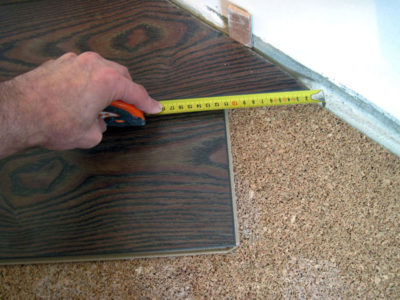
Thus, there is nothing supernatural in laying the laminate diagonally. It takes a little more accuracy, preliminary calculations, planning and the amount of consumables. But as a result, you get not just a beautiful and durable floor, but also the ability to visually expand such valuable square meters. And it’s worth it, isn't it?

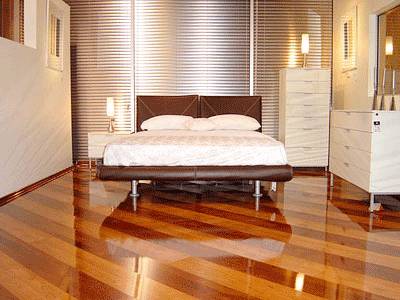
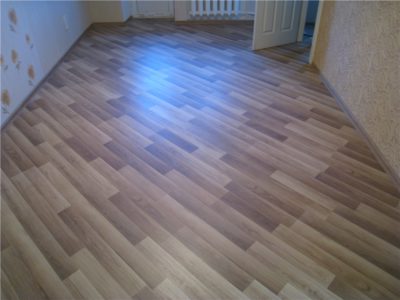
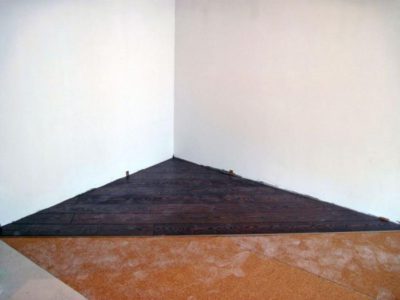
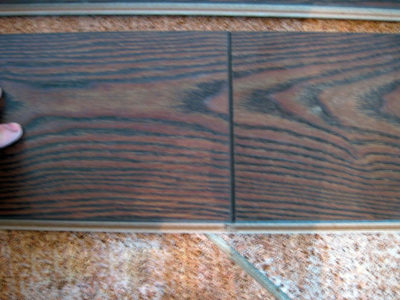
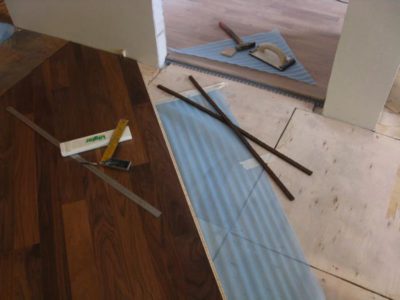
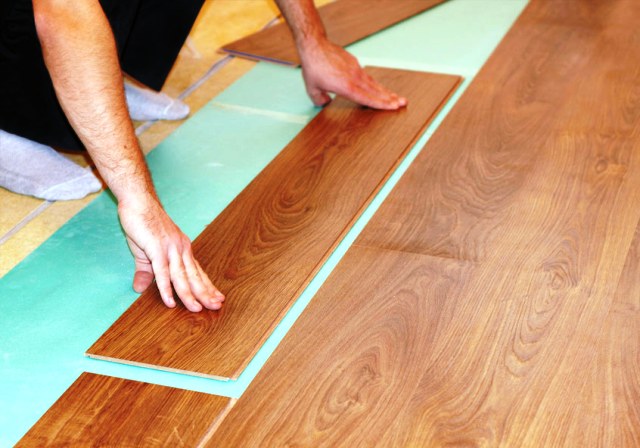

4 comments